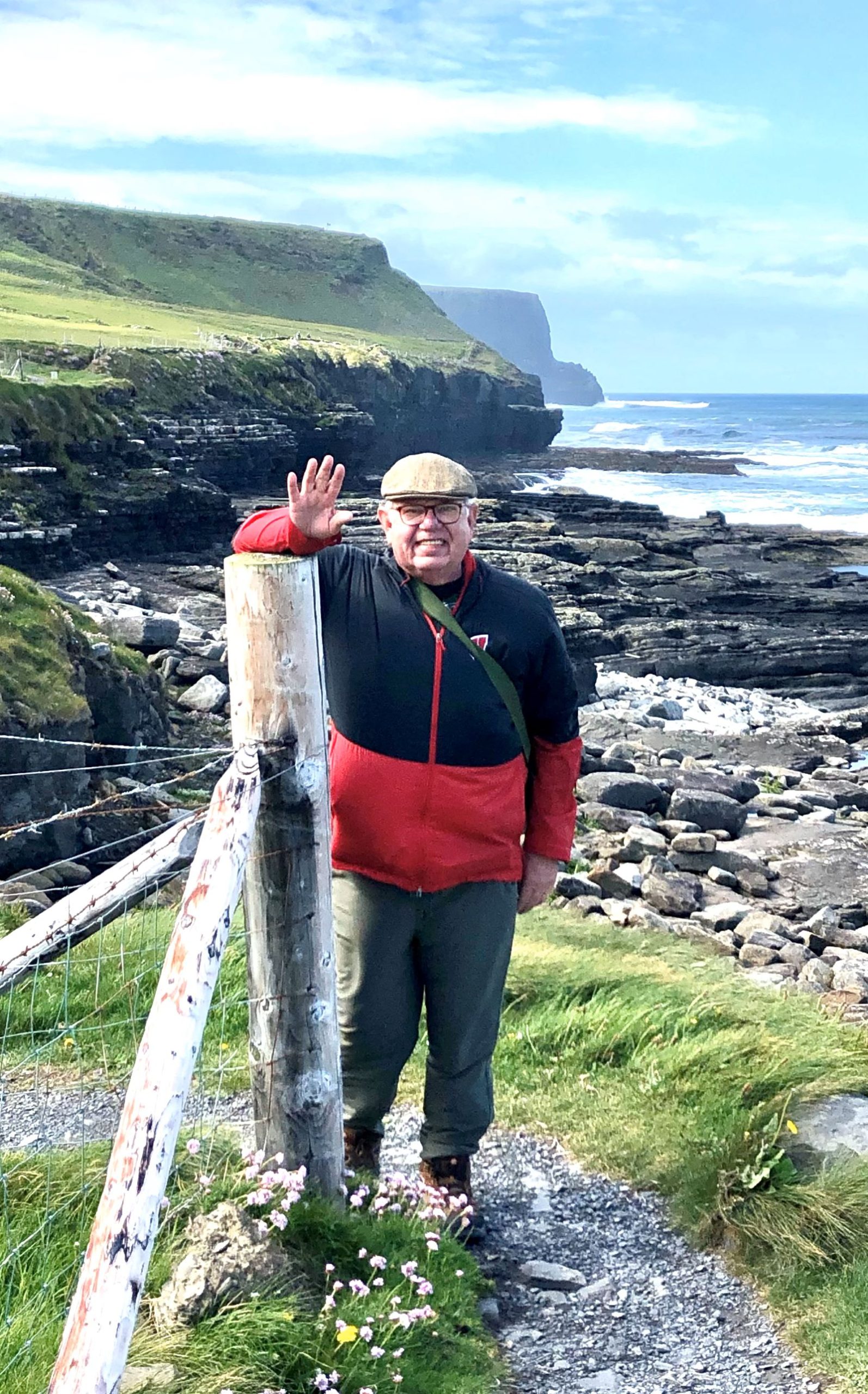What have probably been the two biggest transitional phases in Kenosha’s history have also been watershed moments in shaping the life of John Collins.
The first, when he was a young child, brought Collins to Kenosha in the first place. The second, when he was in the top government position in Kenosha County, forced Collins to take a leading role in making major decisions that shaped the lives of thousands of Kenoshans for generations, leading up to today.
For certain, there aren’t many people around the city whose lives have been so inextricably linked with the modern history of Kenosha and who have lived the complete transformation of the city over the last 70 years or so like Collins has.
And though he’s technically retired and is 77 years old, Collins isn’t done helping to shape Kenosha just yet.
Collins began his working career in Kenosha as a fifth- and sixth-grade teacher at Wilson Elementary School from 1968-78. Interested and active in politics from a young age, Collins transitioned into that world full-time from teaching.
He first ran for Kenosha County Clerk and served in that role for eight years after being elected, then Collins led the county as County Executive for 12 years, from 1986-98.
That period included one of the most tumultuous times in Kenosha history, when the former American Motors car manufacturing plant, which had been taken over by Chrysler, was closed, placing thousands of well-paying jobs – and, in a sense, Kenosha’s entire identity at the time – on the chopping block.
“Right during the big Chrysler transition,” Collins says of his time as County Executive. “That was my baby. That was my project, and it worked.”
After serving in other government jobs for the state following his tenure as County Executive, Collins retired, but he’s as busy today as ever.
Collins is the board secretary – and previously the board president – for the Shalom Center, the board president for the Kenosha HarborMarket, a member of the board for the Kenosha History Center and heavily involved with the Kiwanis Club of Western Kenosha, which put on Taste of Wisconsin earlier this summer.
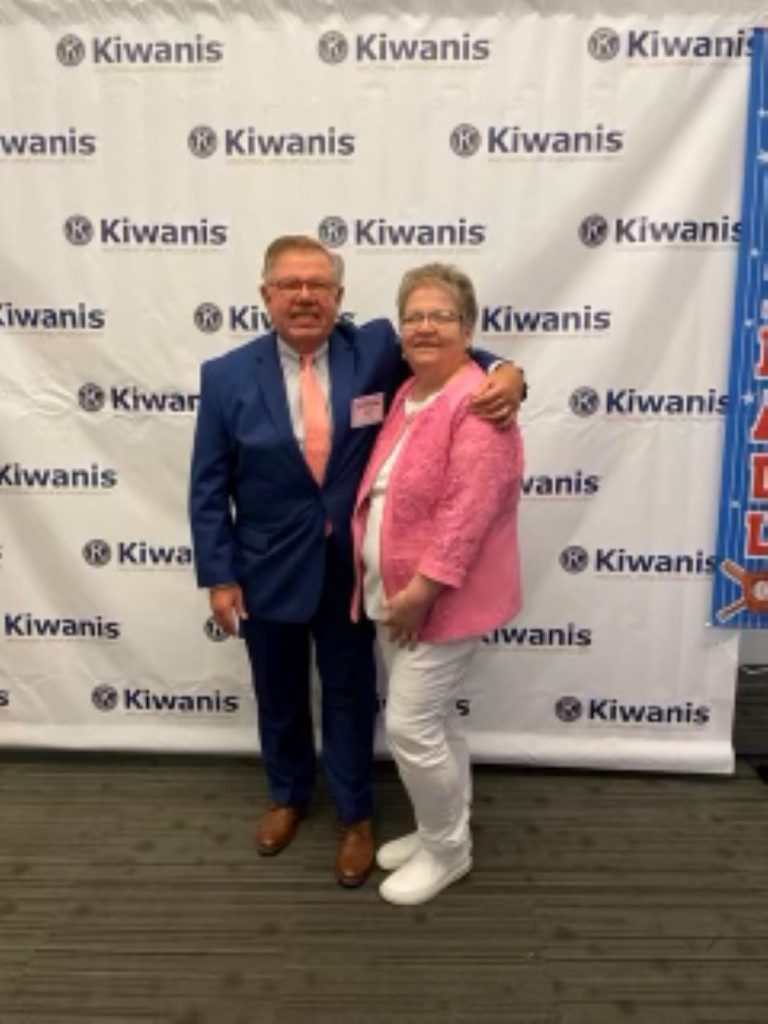
PHOTO: Submitted
“There are some things I’m passionate about,” Collins said in a phone interview this week about why he stays so busy in retirement. “Trying to help support people is one of them, and the (Harbor)Market is a great event, and I’m interested in Kenosha history.
“So those (four) things give me something to do. Some of them involve reading to do, and a lot of interaction. My wife (Gayle) would say, ‘You have another meeting today?’ … ‘Yes, I have three.’”
For all he has done and continues to do for the community, John Collins has been named this week’s Kenosha.com Kenoshan of the Week.
Coming to Kenosha
Collins was born, as he says, “in the Northwoods.”
His family lived in the Eagle River/Iron Mountain area, and though he was technically born just over the Michigan border in the Upper Peninsula – that’s where the hospital was – Collins’ first residence after being born was back across the border in Wisconsin.
“We lived in a forest, literally,” Collins said. “You could walk out our back door, and it was 20 miles to the nearest blacktop road.”
What brought Collins and his family all the way down to Kenosha in the 1950s was what brought many families to Kenosha and cities like it in that day. It was a manufacturing boom that transformed such places then.
“Well, it was a classic 1950s story,” Collins said. “Families were leaving the woods to come get jobs in the factories. In Kenosha, we had neighbors from Germany and Mississippi and Italy. All had come to Kenosha to get jobs at the Motors or the Brass or MacWhyte, or one of those places.
“We imported a lot of people to work in those factories back in that era.”
Collins has lived in Kenosha ever since.
He first attended Frank Elementary and graduated from Bradford High School – back when it was in the old building downtown, of course – before attending a college that no longer exists, the Racine-Kenosha County Teachers College in Union Grove, for two years.
From there, Collins transferred to UW-Oshkosh, where he received his degree in elementary education.
After obtaining his degree, Collins came back to Kenosha to teach science, history and math at Wilson, the inner-city neighborhood school that was closed at the end of the 2022-23 school year. Collins attended Wilson’s closing ceremony in early June and has always had fond memories of the school and its students and families.
“When I got into politics and I would go periodically over to the Second Baptist Church, where Reverend Arrington was the pastor, I would walk into the back, and all these ladies would come over and give me a hug, because I’d had their kids in school,” Collins recalled.
“…They still do (hug him).”

PHOTO: Submitted
All the while, going back to his college days, Collins was fomenting a passion for local politics.
“Young guy, full of all sorts of steam,” he said of his younger self with a laugh.
That passion led Collins into his tenure as County Clerk and then County Executive, where he was thrust right into the center of one of Kenosha’s most turbulent periods.
Leading through the storm
When Collins took over as County Executive, Kenosha had long been transformed by the manufacturing boom.
With the presence of American Motors, auto manufacturing had become probably the city’s top – and one of its best-paying – vocations. Collins recalled that during its heyday in the mid-1970s, AMC employed about 13,000 blue-collar workers that belonged to the United Auto Workers Union Local 72.
“High wages, all the people working there, a lot of them had a home up north, they had two cars,” Collins said. “They were living a middle-class life.”
Yet despite that, AMC had a lot of problems at the top.
“AMC was always — it didn’t do well,” Collins said. “It was consistently broke. What’s that Frank Sinatra song? Flying high in April and shot down in May (the song is ‘That’s Life’).
“They were doing that kind of stuff. It was just terrible, the inconsistency.”
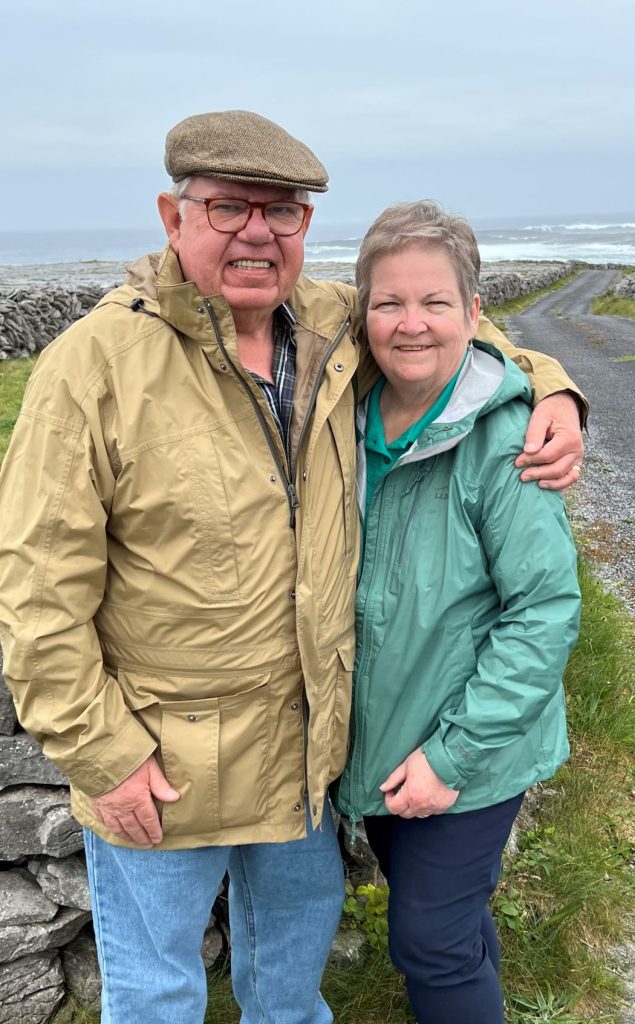
PHOTO: Submitted
Thus began years of turbulence for AMC, which first went under the umbrella of the French company Renault and eventually under the auspices of Chrysler, which wanted the Jeep brand. The auto manufacturing plant in Kenosha had managed to stay open through all the changes, but in fall 1988, the announcement came that it would close because Chrysler had to consolidate its factories.
“This plant was an outlier,” Collins recalled. “It wasn’t part of the Chrysler family. Some of the union guys here didn’t get along with the union guys from Detroit. There were all kinds of problems. … This was an easy one to pick out (for Chrysler to close).
“… They stopped manufacturing cars here. When they announced that, the community went nuts.”
So, in his position as County Executive, Collins stepped into a leadership role to shepherd Kenosha through that painful transition. Chrysler did ultimately decide to keep an engine plant open in Kenosha, which employed thousands of people until it finally closed in 2010.
Collins said it took a lot of work with a lot of different personalities to guide Kenosha through that scary period in the late 1980s.
“A lot of conflicts, a lot of people, a lot of personalities, a lot of lies,” he recalled of that saga.
But Collins figured it was his job to help smooth things out to ease the pain and worry of so many Kenosha families.
“I just called a meeting together and formed a transition committee,” he said. “We had labor guys, we had people from the state, we had everybody together, and we met at Gateway (Technical College).
“We had a once-a-month meeting, so it would broadcast live on the local radio station. That whole process gave people some confidence that there was something going on.”
Today, if you look around downtown Kenosha, it’s obvious that everything worked out well. It barely looks like the same city that it was in those AMC days of yesteryear.
“Well, it’s just entirely different,” Collins said.
But it wasn’t a simple, painless process to get Kenosha to where it is today. It’s easy to say that the auto manufacturing jobs weren’t all that great, anyway, and that we’re all better off now, but that’s just not accurate.
“Do some math,” Collins said. “If those 10,000 jobs were here (and) people (were) making, at that point, 30 dollars an hour, do you know what we would do if somebody said, ‘I’ve got a factory that’s going to hire 10,000 people and pay them well with union benefits. Would you like to have it, or not?’
“Well, that’s pretty easy.”
Ultimately, what helped Kenosha undergo a successful transformation was its location. Just like the manufacturing boom brought so many people and jobs to the city in the 1950s, so have recent industry trends done so at the turn of the century and up until today.
It’s the reason Kenosha is thriving now, when so many other factory towns that went through things like Kenosha did in the late 1980s never got back to prosperity.
“We did better here,” Collins said. “We did better here than most other places that have been through this. Not because of the terrific, the visionary, leadership of John Collins, but rather because of our location within the Chicago area.
“… People were moving here in droves from northern Illinois, and businesses moved here from northern Illinois, so we were able to maintain economic viability because of our proximity to the Chicago market.”
Travel and baseball
Following his tenure as County Executive, Collins did some consulting work and then went to work in Madison – still residing in Kenosha, however – for the Wisconsin Department of Workforce Development.
When Jim Doyle was elected governor in 2003, Collins was brought into Doyle’s administration, managing operations for the Wisconsin Department of Financial Institutions.
After eight years in that role, Collins retired, but as previously mentioned, that retirement has been in name only, because Collins is still plenty busy.
However, he still finds time to travel, and he’s specifically fond of Ireland. Collins said he’s been to Ireland four times in the last eight years, and he especially loves the western side of the “Emerald Isle.”
“The west of Ireland is just a magical place,” Collins said. “The Atlantic coast of Ireland tends to be smaller towns.”
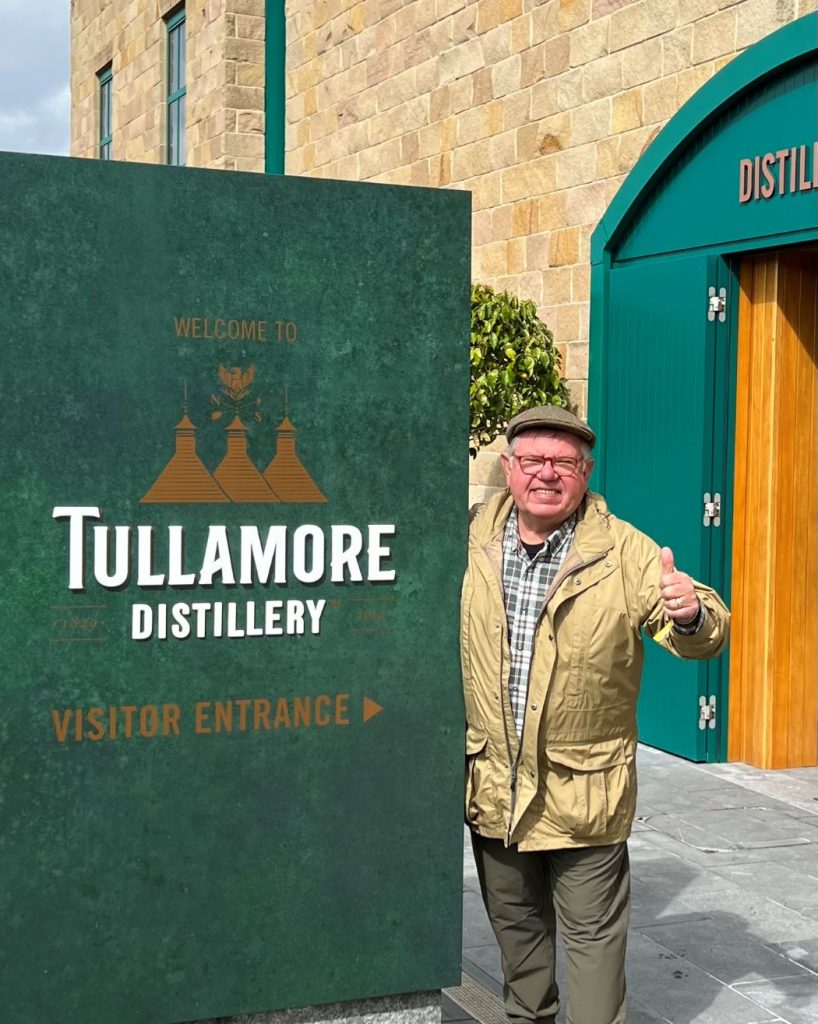
PHOTO: Submitted
Additionally, Collins and his wife have two children who both live in northern Illinois, within an hour’s drive of Kenosha. That means John and Gayle now have four grandchildren that keep them plenty busy, too.
And in addition to everything else he embodies about Kenosha and its spirit, Collins’ passion for baseball and his status as a big Chicago Cubs fan are also so reflective of Kenosha’s story.
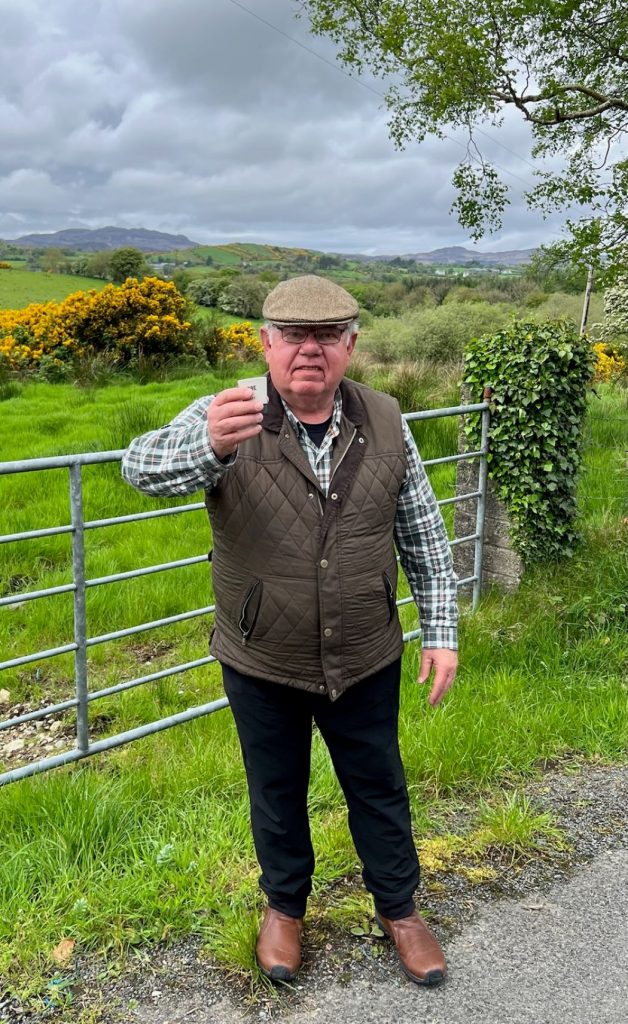
PHOTO: Submitted
Like so many of his generation, Collins would come home from school or various adolescent jobs in the summer and turn on WGN to catch a Cubs game. And his Cubs fandom actually started to develop before he even came to Kenosha, along the border with Michigan’s Upper Peninsula.
“I remember when we lived in northern Wisconsin, you could get two teams on the radio,” Collins recalled. “One of them was the Detroit Tigers and the other one was the Chicago Cubs.”
Though he says he doesn’t get to as many games as he used to, since he has so much going on these days, Collins absolutely loves getting down to Wrigley Field when he can. He also likes to take trips to Mesa, Ariz., each spring to catch the Cubs in spring training action.
“There was a point in time when my second home was Wrigleyville,” Collins said. “I spent a lot of time hanging out in the neighborhood there.”
One of the other great things about Kenosha, of course, is that baseball fans can either go down to Chicago or up to Milwaukee to feed their passion. Collins has gone to plenty of games in Milwaukee, too, both to see the Brewers and the Braves back in the 1950s and 1960s at old County Stadium, before they moved to Atlanta.
Collins recalled a yearly trip to County Stadium for a Cubs-Braves game that the Kenosha News would sponsor. One year, Collins was dispatched to the News to drop off the money and pick up the tickets for his group.
“The lady behind the counter said, ‘What side do you want to sit on?’” Collins said. “I said, ‘We’re sitting on the Cubs side.’”
The rich mix and tapestry of baseball fandom in Kenosha is, in fact, also a microcosm for the demographics of the city itself.
Through all the changes and transformations, of which John Collins knows and has lived so closely, Kenosha has always remained the same town at its core.
And Collins loves that.
“I like ‘Old Kenosha,’” he said. “I like the family connections that exist here that do not exist in many other communities. When I was in politics, I always joked – it’s so true – ‘Don’t say anything bad about somebody, because you’re probably talking to their cousin.’ All of that that goes on, I enjoy that a lot.
“I enjoy going to small, family-owned pubs and restaurants, (like) Union Park Tavern, those kinds of places. And just being with people from the community and participating in the community. It’s just great fun.”
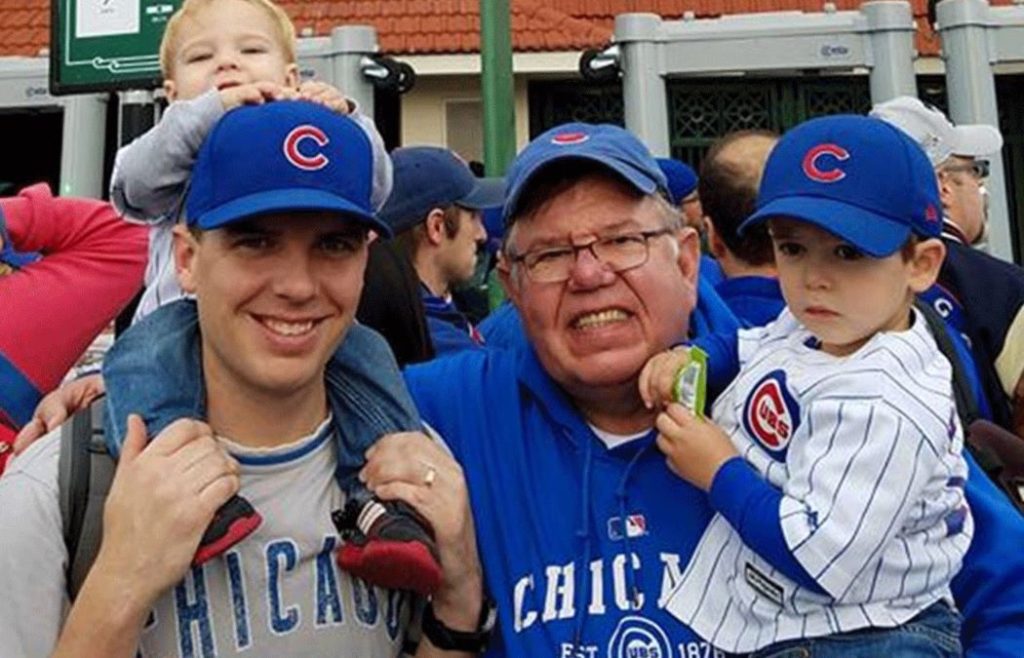
PHOTO: Submitted
